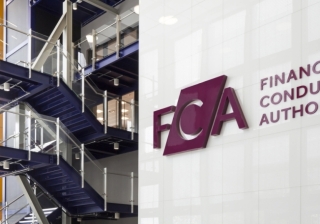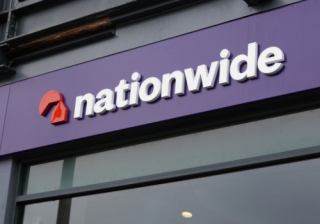The tide is turning for high-LTV mortgage rates
Patrick Bamford, head of international business development at Qualis Credit Risk, looks at the future path for mortgage rates at higher LTVs.

"The tide is finally turning and we could see lenders decide that, in order to secure business and a competitive advantage, further rate cuts can be justified."
The start of September always feels like a new beginning, and even though we are in the very early throes of this month, it is already starting to feel like significant movement is tangible within the mortgage market, hopefully taking us into a better rate and finance environment.
Certainly, when it comes to first-time buyers seeking low-deposit mortgage products we have continued to see further product number growth, albeit with rates not quite following the opposite trajectory. However, as I will explain later, I think there are some signs that we are not too far away from this either.
As I hope you know, every month I look at 95% LTV product choice based upon the average Nationwide house price, and it is positive once again to see further momentum in this space.
Last month there were 143 products available at 95% LTV, but we have made a further significant jump to 169 products in early September, split between 151 fixed-rates and 18 trackers/discounts/variables. The big mover again here were fixes, with an increase of 24, but also the variable deals increased slightly up by two to 18.
All positive to note, especially considering the continued importance of accessible mortgage finance for those borrowers who are not able to save 10/15/20% deposits, or who can’t rely upon a Bank of Mum and Dad to help them meet those levels.
The lowest priced 95% LTV deals remain five-year fixes, and it’s positive to report that we’ve seen some movement downwards here. Last month, the Cumberland led the way with its 5.82% deal, however Skipton now head the best buy table with its 5.69% deal.
In the variable space, Vernon continue to lead the way with its 5.4% lifetime discount, and you can still access the Beverley Building Society’s three-year discount product, albeit now at 5.54%.
What is potentially interesting here is how 95% LTV product rates currently compare to those available at 60% LTV, and as a result, where lenders might feel the market is actually heading.
The reason being that (at the time of writing) the lowest rates for those with a 40%-plus deposit/equity are all 10-year fixes, with the majority of rates still hovering around 5% but the outlier being a Lloyd’s deal for its current account customers, currently available at 4.83%.
Now, reading into this, my belief is that lenders are making these longer-term deals the ‘cheapest’ in anticipation of rates coming down, at which point it will make more sense for borrowers to potentially take a shorter-term deal. Especially if they believe the medium to long-term trajectory is further rate cuts.
Essentially, lenders want borrowers on the books for a longer period at these higher rates because they are a) more profitable, and b) probably sense a shifting marketplace in the not so distant future.
It’s why we have the best rates at 95% LTV being for longer terms – albeit five-year not 10 – and why there is a considerable differential between, for example, five-year fixes and two-year fixes right now.
The best two-year fix at 95% LTV right now is Leeds BS’s 6.24%, compared to Skipton’s five-year fix at 5.69%.
On the surface of course, it may look like a no-brainer to the first-time buyer to opt for the five-year deal, and it would definitely make sense to secure a deal just in case we are still moving upwards in terms of rates.
However, there is also the potential for some significant shifts in rates in the coming months. If inflation does continue to fall, if the Bank of England feels it doesn’t need to move rates much higher (if at all), if the money markets continue to feel more confident that rates have either peaked, or are close to the peak, then pricing should track downwards.
Now, admittedly, there are a lot of ‘ifs’ in that, but we’ve already seen in recent days some of the bigger lenders cutting rates – others will certainly follow - and swaps – with the exception of 10-year swaps – are all currently cheaper than they were a month ago, which combined together might tell us a lot about what is anticipated, certainly over the course of the rest of 2023 and especially into next year.
We do have an MPC meeting in September – the 21st for your diaries – and a lot will be determined by the latest inflation results, but if the latter shows a fall – particularly for core inflation – then we might get the status quo being accepted by the MPC.
That would be a moment, especially considering the constant increases over the past year, and while it might not be a fully-drawn line in the sand, it might signal the tide is finally turning and we could see lenders decide that, in order to secure business and a competitive advantage, further rate cuts can be justified.
A month is a long time in the mortgage market, but just maybe we’ll have further positive news to report when I next come to write this article. Let’s hope so.
Breaking news
Direct to your inbox:
More
stories
you'll love:
This week's biggest stories:
FCA
Firms required to report complaints involving vulnerable customers under simplified FCA rules

Santander
Santander joins mortgage price war with new rates from 3.51%

FCA
FCA sets out timeline for mortgage rule changes

State Pension
Budget: Government signals income tax write off for state pensions exceeding personal allowance

This week's biggest stories:
FCA
Firms required to report complaints involving vulnerable customers under simplified FCA rules

Santander
Santander joins mortgage price war with new rates from 3.51%

FCA
FCA sets out timeline for mortgage rule changes

State Pension
Budget: Government signals income tax write off for state pensions exceeding personal allowance

FCA
FCA announces new measures to support growth of mutuals sector

Nationwide
FCA fines Nationwide £44m for inadequate financial crime controls
